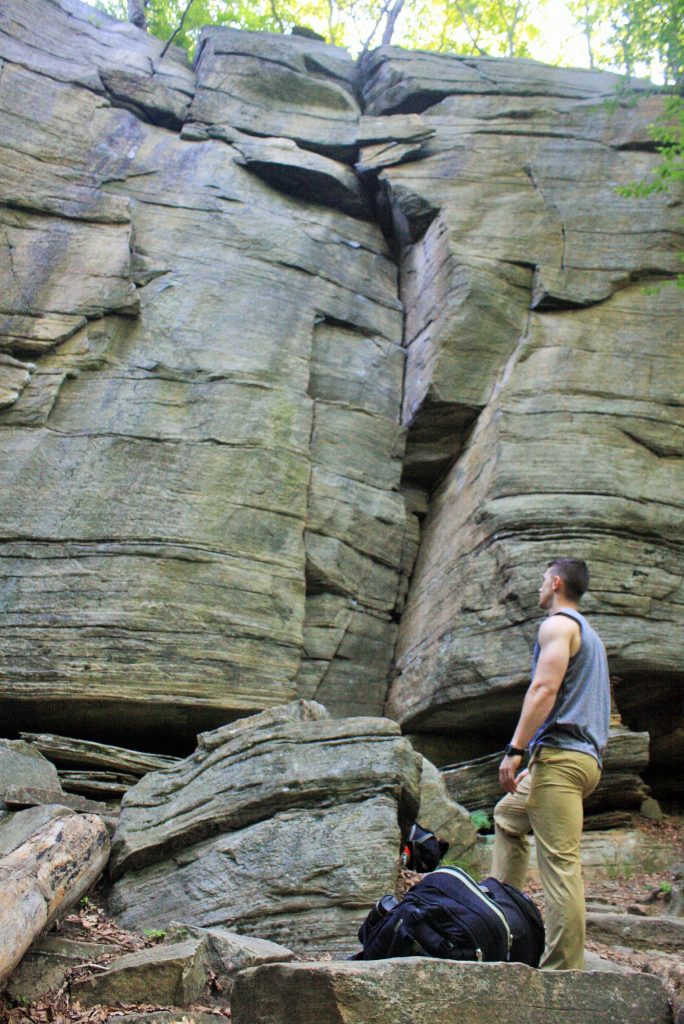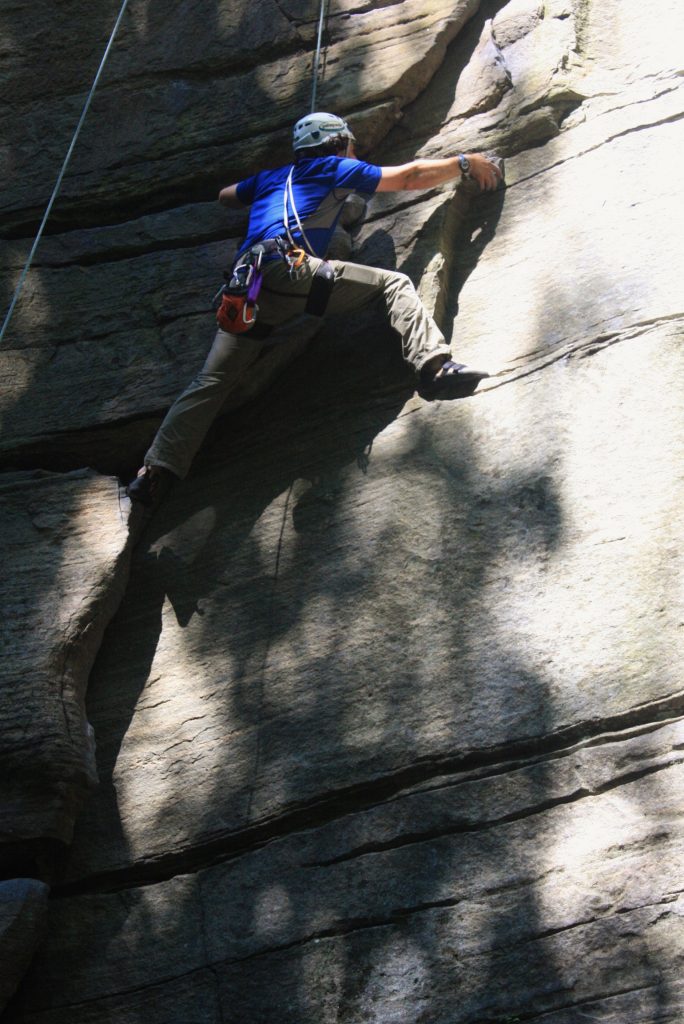As the cliffs came into view, I immediately felt like a kid in a candy store. I started identifying lines from the guidebook: Tennessee Flake, Guillotine, Double Helix. My hands were sweating with excitement.
I made sure that Matt, my climbing partner, brought in his static line. Based on my last time here, four years ago, I had to go deep for sufficient natural anchors to top rope. I was positive those last trees were either raw or otherwise devastated, so we climbed the wooden steps placed in the gully that divided the most popular climbs at Rose Ledges from the less-explored lichen-covered gneiss. Shock and awe greeted us as I crept closer to the edge on my safety line, and there, I noticed two perfectly spaced, level, and shiny new top rope anchor bolts.
 The New England climbing community considers bolting a relative faux pas, as it supposedly scars these millennia-old surfaces. But, a recent movement now supports bolting, with the main tenant being, “Bolt for safe, leave the face.” I was delighted to discover Rose had become privy to this belief, for no one but a climber would have found these placements.
The New England climbing community considers bolting a relative faux pas, as it supposedly scars these millennia-old surfaces. But, a recent movement now supports bolting, with the main tenant being, “Bolt for safe, leave the face.” I was delighted to discover Rose had become privy to this belief, for no one but a climber would have found these placements.
I giddily rigged up a simple top rope anchor, although I knew this meant our climbing time would likely double. I started to rappel off the end and realized in my enthusiasm that I had actually set the rope to the next climb. I conferred with Matt, and we agreed to go with the flow. I noted that it was the top of a hairline crack he had ogled from the bottom; however, it ended up being a terrifically sequenced 5.10 many call Widowmaker.
I had been on lead for my first attempt at it before heading back down. “Well, Matt, I guess you can try it now,” I told him. “Just be warned: It’s a little stiff for a warm up.”
Ready and not at all discouraged from our flailing (though we both did eventually top out the Widowmaker), we moved our anchor and went to the route we originally intended, Guillotine.
Guillotine is known for a great combination of laybacks and complex stemming moves, with a big finale over a short, overhanging boulder. After watching Matt try it with only a little trouble at the cruxes, I got the bright idea that it would be more fun if I strung the rope from the ground up.
This proved to solidify the appropriateness of the name, as I realized I had used far too much of my large gear near the bottom of the climb. Probably the worst moment was when I heard my .75 cam walk itself out of the crack and skitter down the line, making my modestly protected run a certain deck situation if I didn’t get the largest nut I had left in my hand slotted and clipped. But, knowing a climb could cut you in half at any time has always been part of the game.
The rest of the day went smoothly: We were able to get in the remainder of the main face’s classics, effortlessly transitioning the rope down the line with little time invested in re-equalizing. Even in the middle of June, mild temperatures lasted all day, and the cliffs appeared just barely as peaks over the trees.
Logistics wise, the cliff is about an hour north of Hartford, an hour and a half east of Albany, and about the same distance from Boston. There, we opted to stay at a local campsite on the Connecticut River, 10 minutes away from parking. Expect a good half hour-plus hike in, depending on your pace. All in all, it has everything I look for in a one-pitch wonder: accessibility, easy setup, and, most of all, great climbing.

David Godfrey
David worked for EMS from 2007 to 2020 and has been climbing since he was young. He shares his passion for sports, family, and automobiles with everyone around him. He's a native New Englander, a full-time dad, part-time route setter, and explores the country with his wife, son, daughter, three dogs, and two cats.
Related Posts
April 12, 2024
Explore Like a Local: The Outdoor Mecca of North Conway, NH
There's a lot to love about this New…
April 3, 2024
5 Things To Do in the Boston Area During Mud Season
Adventure opportunities are abundant…




